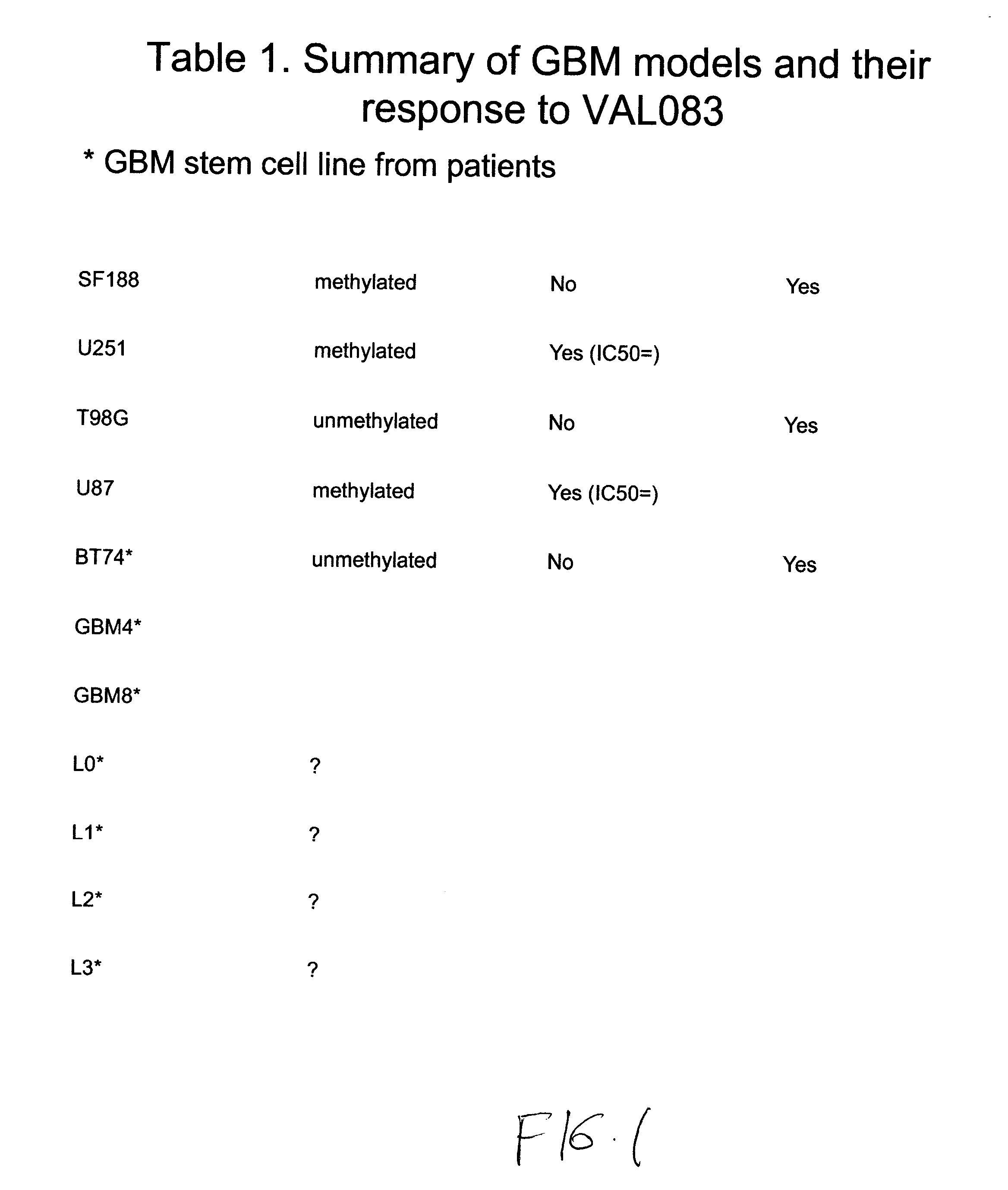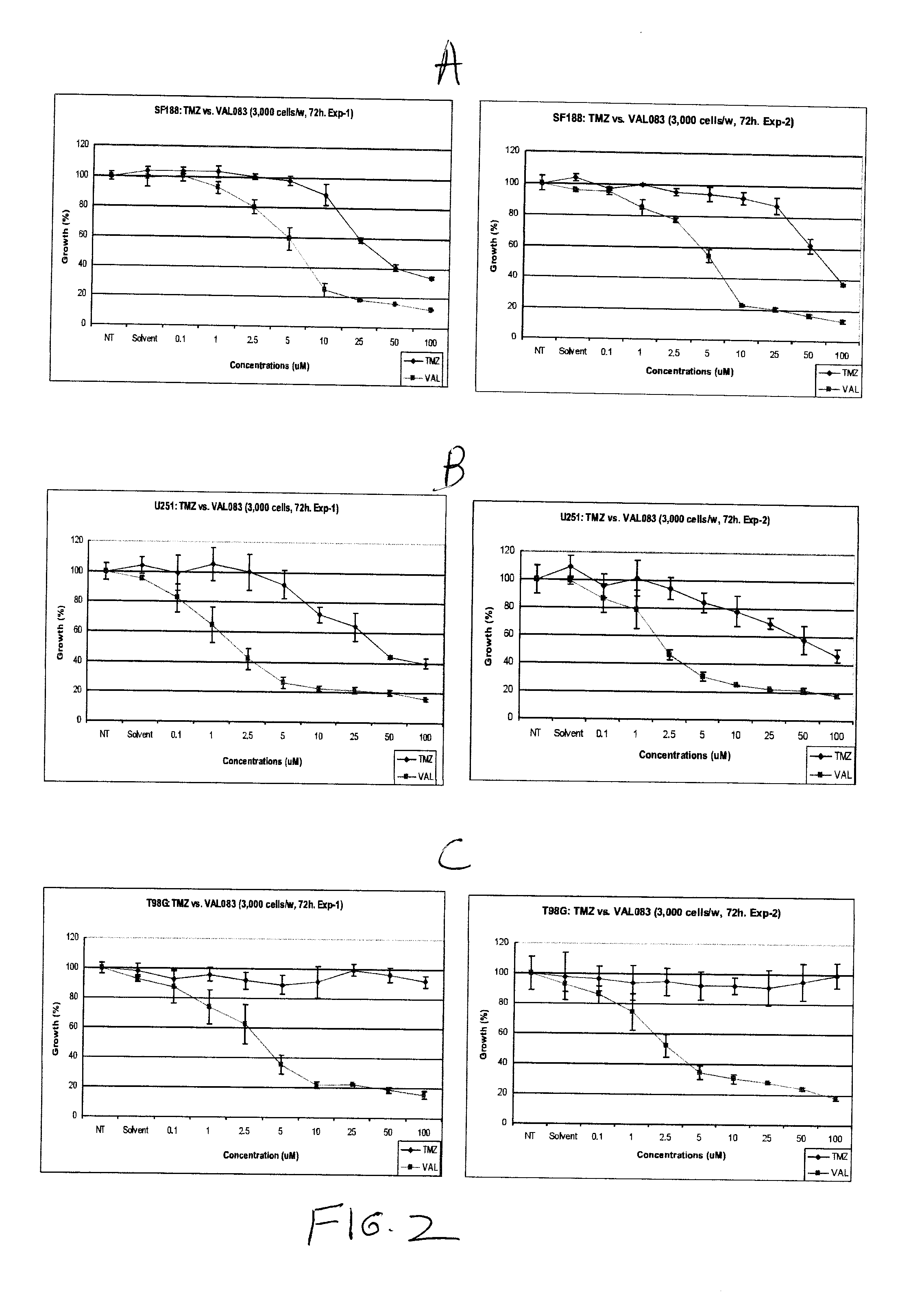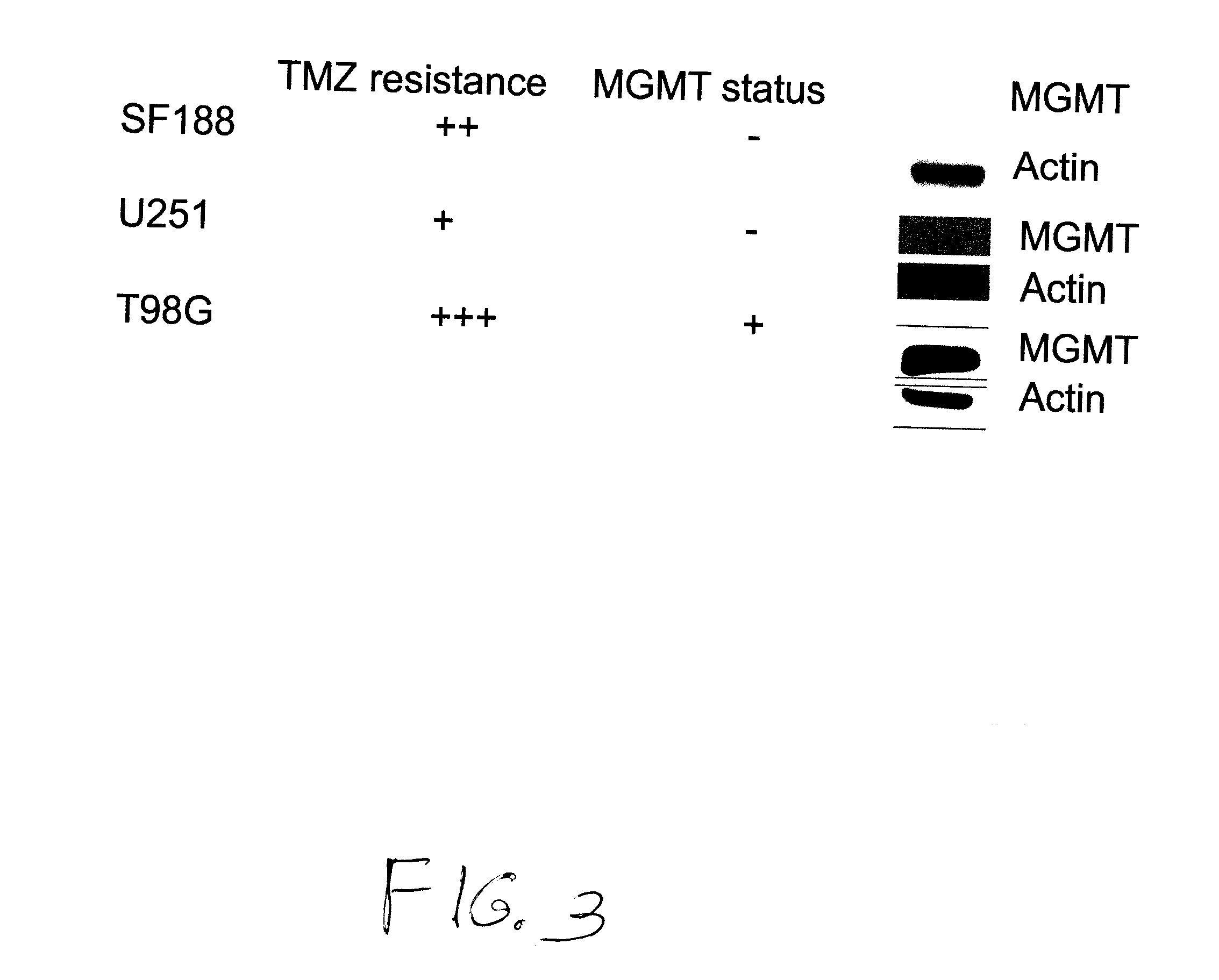Use of dianhydrogalactitol and analogs and derivatives thereof to treat glioblastoma multiforme
a technology of dianhydrogalactitol and glioblastoma, which is applied in the direction of biocide, drug composition, therapy, etc., can solve the problems of gbm with an extremely poor prognosis, progressive memory, personality or neurological deficit, and tumor can start producing symptoms quickly, so as to suppress the growth of cancer stem cells, suppress the growth of csc, and improve survival
- Summary
- Abstract
- Description
- Claims
- Application Information
AI Technical Summary
Benefits of technology
Problems solved by technology
Method used
Image
Examples
example 1
Use of Dianhydrogalactitol to Inhibit Growth of Glioblastoma Multiforme and Medulloblastoma Cells
[0917]Materials and Methods:
[0918]Cell Lines and Culture Conditions:
[0919]All cells were cultured in DMEM (Dulbecco's Modified Eagle's medium; Invitrogen / Gibco) with 10% FBS (fetal bovine serum; Invitrogen / Gibco) at 37° C. with 5% CO2, and subcultured twice weekly during the experimental period.
[0920]Drugs:
[0921]Temozolomide (TMZ) was purchased from Sigma Aldrich and dissolved in dimethyl sulfoxide (DMSO) (Sigma-Aldrich). A stock solution of 100 mM was kept at −20° C. before use. Dianhydrogalactitol (DAG; results with DAG are shown as “VAL” in the figures) was provided by Del Mar Pharmaceuticals Ltd. A stock solution of 100 mM was prepared by dissolving the lyophilized powder in the injection vial in sterile phosphate buffered saline (PBS) and kept at 20° C. before use.
[0922]Growth Assays:
[0923]Each cell line used was seeded at 3000 cells / well in 100 μL medium in a 96-well plate (BD Falc...
example 2
Study of Dianhydrogalactitol in Patients with Recurrent Glioblastoma Multiforme
[0945]Median survival for patients with recurrent glioblastoma multiforme (GBM) is less than 6 months. Front-line systemic therapy is temozolomide (TMZ), but chemo-resistance due to O6-methylguanine-DNA-methyltransferase (MGMT) activity has been implicated in poor outcomes. Dianhydrogalactitol is a structurally unique bifunctional DNA alkylating small molecule drug that crosses the blood-brain barrier and accumulates in brain tumor tissue. In preclinical in vitro studies, dianhydrogalactitol demonstrated activity in a wide range of cancer cell lines, including pediatric and adult GBM cell lines and GBM stem cells. Notably, dianhydrogalactitol overcomes chemo-resistance induced by MGMT in vitro. A new clinical study has been initiated with the primary objective of establishing the maximum tolerated dose (MTD) and identifying a dose and dosing regimen for further study. Dose-limiting toxicity is expected to...
PUM
| Property | Measurement | Unit |
|---|---|---|
| median survival time | aaaaa | aaaaa |
| median survival time | aaaaa | aaaaa |
| median survival time | aaaaa | aaaaa |
Abstract
Description
Claims
Application Information
 Login to View More
Login to View More - R&D
- Intellectual Property
- Life Sciences
- Materials
- Tech Scout
- Unparalleled Data Quality
- Higher Quality Content
- 60% Fewer Hallucinations
Browse by: Latest US Patents, China's latest patents, Technical Efficacy Thesaurus, Application Domain, Technology Topic, Popular Technical Reports.
© 2025 PatSnap. All rights reserved.Legal|Privacy policy|Modern Slavery Act Transparency Statement|Sitemap|About US| Contact US: help@patsnap.com



